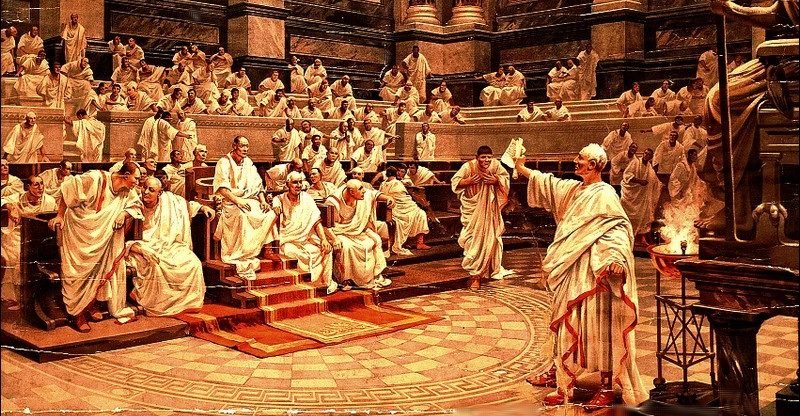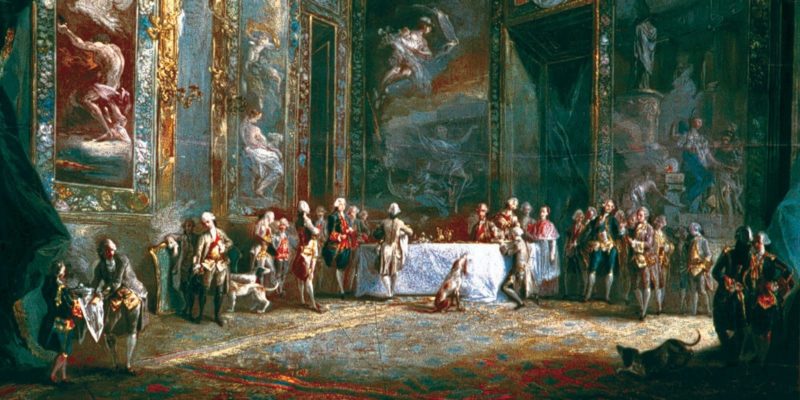We explain what the republic is, its main pillars and how it is classified. Also, what are its general characteristics and examples.
What is the Republic?
A republic is a political system based on the rule of law (the predominance of a national constitution ) and equality before the law (called the rule of law), that is, a set of laws that govern the entire population equally and without distinction of any type of conditions.
It is a system of ancient origin , but of relatively recent popularization and implementation in historical terms, and the most accepted in the contemporary world since it allows a model of power management by consensus of all the governed.
Republic should not be confused with democracy , since one can exist without the other, at least theoretically. When we speak of a republic we speak of a model of political and administrative management institutions.
Origin of the republic
The term "republic" comes from the Latin voice respublica , composed of res ("thing") and publica (of all, public), so it is equivalent to the management of the public, of the sovereignty that resides in the people and not in their rulers.
This means that in a republican system, the governed can establish the framework of laws according to which they wish to administer the interests of all.
History of the republic

The republic as such dates from ancient times, especially Ancient Greece , although it did not operate exactly as it does today. In the Greek republics there was slavery and they were governed by a military aristocracy, together with a council of wise men who administered law and religion.
From there the concept passed to the Roman Empire , which alternated periods of monarchy and republicanism, but it was not until the fall of the absolutist monarchies in Europe (around the 18th century) that the republic was imposed as the system of government elected by the masses. . This was greatly influenced by bourgeois thought and the French Enlightenment ( Enlightened Republicanism).
Fundamental pillars of the republic

Every republic is sustained based on certain central precepts, which are:
- The rule of law. In a republic, all the inhabitants of the nation enjoy the same rights and duties, which establish their social and political participation in terms of equality before the law. The laws apply to everyone without distinction.
- The law Empire. All republics are governed by a fundamental legal text, which is the Magna Carta or Constitution. There are written all the laws and legal principles that govern and determine life in the republic, and that are above any existing political authority. Violating these precepts of the law will entail penalties also contemplated in the criminal and legal codes that are derived from the Magna Carta.
- The separation of powers. The public powers of every republic must be independent and autonomous, in such a way as to provide political and legal stability to the nation. Traditionally these powers are three: executive , legislative and judicial .
Republic types

There are various ways of understanding and classifying the republic.
According to his government regime :
- Democratic republics. Those who elect their rulers through referendums and popular, free and secret elections, either direct or indirect (they exercise democracy).
- Authoritarian republics. Those that are ruled despotically by some political faction: parties, military estates, etc. They are dictatorships , as is the case with one-party or communist republics.
- Secular republics. Those that have separated religion and state . The state operates according to the body of laws contained in the Constitution and everyone chooses their moral and religious code (there is freedom of worship).
- Confessional republics. Those in which the State more or less adheres to an official religion, which can simply govern its customs and traditions, or even control what appears in its Magna Carta. There are extreme cases such as the Islamic republics, whose legal corpus is the same religious text (the Koran).
According to his conception of the executive :
- Parliamentary republics. Those in which a robust parliament operates from which the prime minister, representative of the executive, is elected, whose executive powers are controlled and submitted to parliament.
- Presidential republics. Those that elect in one way or another a president to whose investiture great executive powers are delegated, to which the legislative power makes more or less a counterweight.
- Semi-presidential republics. Those that combine the two previous models, that is, that have a president but also a prime minister elected by parliament, and both share executive power. It is known as the two-headed state (with two heads).
Republic and democracy

The republic should not be confused with democracy, as we said. Within a republic there can be a dictatorship , as in one-party republics, without thereby becoming monarchies .
Similarly, there are democratic monarchies (parliamentary or constitutional monarchies) governed by a legal text despite having a king (who holds a certain degree of executive power) and who elect their parliament through elections.
The republican government
The republican government is understood to be one that resides in the institutions : those emanating from the public powers and enshrined in the laws and the constitution.
This system is based on the balance of the sectors of legal authority : the executive directs the strategic decisions of the nation and proposes a future political project; the legislature produces the laws that regulate and establish the acts of government and serve as control to the political project of the executive; and the judiciary ensures that all this occurs in accordance with the regulatory framework established by the Magna Carta.
Republic vs. monarchy
The republic and the monarchy are distinguished, essentially, in the presence or absence of a king . So much so, that in the ancient Roman Empire periods without an emperor, governed by the council of patricians, were called Republic, while monarchical periods were determined by the coronation of Caesar.
Republicanism
Republicanism is called the political theory that is interested in the republic and proposes and defends it as an ideal system of government , opposing it to the monarchy (government of the king) and the aristocracy (government of the nobility).
It emerged at the end of the Middle Ages as a reinterpretation of the political contributions of Greco-Roman antiquity and was a key piece in Enlightenment thought and in the arrival of bourgeois revolutions.
Republic corruption

Republican theory recognizes two forms of corruption or degradation:
- Oligarchy . It is understood as the form of government in which power resides in a group or social, political or economic establishment, and that twists the republican norms to favor their interests over the common good.
- Despotism . It is understood as the emergence within the republic of a single power that controls all public powers and subjects them to its will. It can lead to a monarchy, tyranny or dictatorship.
The republic today
Today the republic is the most common system of government in the West , especially in the younger countries of the American continent . In fact, the American is considered the oldest in the modern world, emerged after its war of independence; something that also happened in all the Latin American republics.
After the fall of the USSR (Union of Soviet Socialist Republics) in 1991, China , Cuba and North Korea are the only existing communist republics, while there are few Islamic republics: Iran, Pakistan, Afghanistan and Mauritania .
The above content published at Collaborative Research Group is for informational and educational purposes only and has been developed by referring to reliable sources and recommendations from technology experts. We do not have any contact with official entities nor do we intend to replace the information that they emit.
Veronica is a culture reporter at Collaborative Research Group, where she writes about food, fitness, weird stuff on the internet, and, well, just about anything else. She has also covered technology news and has a penchant for smartphone stories. .
Leave a reply
Your email address will not be published. Required fields are marked *Recent post

Sport: What Is It, Types, Risks, Features, Characteristics and Examples

Dogs: Emergence, Features, Characteristics, Feeding and Breeds

Story: Definition, Elements, Structure, Features and Characteristics

